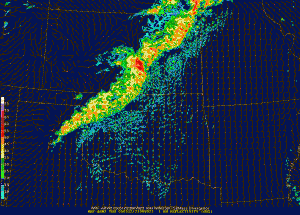Best Practices for Numerical Weather Prediction Studies
 The late Tom Warner of the National Center for Atmospheric Research just published an article entitled “Quality Assurance in Atmospheric Modeling”. You may not get it from the title, but this is a powerful paper that lays out 14 steps for improving modeling practices. All students and users of models need to read this paper and employ its lessons in their work.
The late Tom Warner of the National Center for Atmospheric Research just published an article entitled “Quality Assurance in Atmospheric Modeling”. You may not get it from the title, but this is a powerful paper that lays out 14 steps for improving modeling practices. All students and users of models need to read this paper and employ its lessons in their work.
Warner, T. T., 2011: Quality assurance in atmospheric modeling. Bull. Amer. Meteor. Soc., 92, 1601–1610. http://dx.doi.org/10.1175/BAMS-D-11-00054.1 [PDF]
1. Clearly define the scientific or practical objective.
2. Identify and develop a physical understanding of the atmospheric processes that must be accurately simulated.
3. Perform a thorough analysis of all available observations.
4. Prepare an experimental design.
5. Define the required horizontal and vertical resolutions of the model.
6. Avoid the tendency to prematurely run the model, before the above-listed steps have been completed.
7. Choose the model start time and the method of model initialization to allow for spin-up of the physical processes of interest.
8. Run test simulations of evaluate the sensitivity of model solution to the computation domain size.
9. Define the most appropriate physical process parameterizations.
10. Understand the limitations to the predictability of the phenomena being modeled.
11. Establish a verification plan before the model is run and perform a thorough verification, using appropriate metrics, of the model solution using all available observations.
12. Be well organized in maintaining a detailed experimental log and the files of model code and output.
13. Use good coding practices and well-documented and well-tested software.
14. Employ open-source software tools to improve the efficiency of the modeling process.
This paper follows from Warner’s 1997 tutorial on lateral boundary conditions.
Warner, T. T., R. A. Peterson, and R. E. Treadon, 1997: A Tutorial on Lateral Boundary Conditions as a Basic and Potentially Serious Limitation to Regional Numerical Weather Prediction. Bull. Amer. Meteor. Soc., 78, 2599–2617. [PDF]
Warner’s paper is also a natural companion to my paper on how to write effective case studies in meteorology.
Schultz, D. M., 2010: How to research and write effective case studies in meteorology. Electronic J. Severe Storms Meteor., 5 (2), 1-18. [PDF]
There is also complementary material in Chapter 18 in Eloquent Science.


